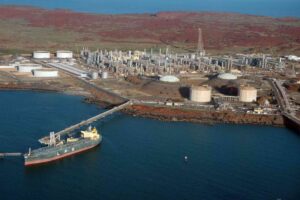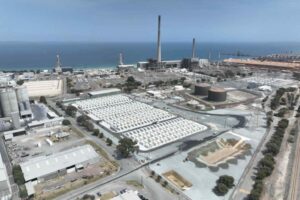The major causes of climate change and air pollution are the burning of fossil fuels for electrical generation and transportation. Bill Gates accepts that but thinks that technical solutions don’t exist already and need to be discovered. Thiel doesn’t even accept climate change, but still thinks we need to invest in disruptive innovation in energy. He is one of the leading Silicon Valley lights behind the clean energy tech bubble that failed while enormous amounts of money is being made by people who accept the reality of cleantech and energy.

What is that reality?
We now have technical solutions for each of the major problems in the solution spaces, it’s just a matter of political will and ongoing incremental innovation.
The major problems are political in nature, not technical. It’s the will to transform and deploy existing technologies and let incremental innovation improve them, which is required.
It’s worth stepping through the major problem spaces and identifying solutions which already exist and where innovation is still required.
Electrical Generation
Generation technologies
This is a solved problem. Wind and solar generation are rock-solid technologies which are now at or below grid parity in many parts of the world and still dropping in price. They will eventually be deployed and provide up to 75% of total global generation. That will take a few decades, and most of the problems pertain to achieving stable and level playing fields and the massive scale of replacement of fossil fuels. Hydro is very solid as well, but most of the best sites have been tapped out and many temperate and tropical potential sites would actually have very high CO2 emissions if developed, so are inappropriate regardless of local impacts on fish stocks and the like. The problems here are continuing incremental innovation, scaling of manufacturing, scaling of logistics, and scaling of deployment teams.
Management and integration
Wind and solar are intermittent but very predictable resources. Dealing with that intermittency is a different grid management problem than dealing with the inflexibility of large nuclear, coal, and hydro plants. This problem has been solved as well, as is shown by Denmarkachieving over 40% from wind energy alone annually with peaks over 125%, Germanyachieving almost 100% from renewables relatively frequently, Spain at 37% annually, Texasgetting 40% from wind alone one day, Portugal achieving 100% renewable electricity for 4 days in a row, etc. The solutions are well understood: build lots of transmission and inter-country and inter-regional energy markets, and put in place better weather prediction such asANEMOS. The problems are getting major utility stakeholders that are attached to large fossil fuel assets to accept the new grid reality (e.g. Poland, Montana, Arizona, etc.) and to get jurisdictions that are historically attached to local electrical independence (e.g. Texas, Ontario) to accept more grid interconnections. There are lots of organizational change issues to work through and there’s lots of money to spend, but the solutions are well understood.
The cheapest renewable energy is the demand you eliminate, and we’ve been getting better and better at this. There’s still room to grow here, but it’s more about implementing solutions more broadly than making up new solutions, just as with generation. Major industrial demand management agreements have been around for a couple of decades. Efficiency programs have cut HVAC, lighting, and similar energy consumptions massively. Smart metering along with time-of-use (TOU) billing is driving businesses and consumers to smarter electricity use choices. Those are being implemented globally. While economic activity is increasing, electrical demand is flat in most economies, which is actually a different kind of problem. There are organizational and political issues, and the issues of funding, but the technical issues are implementation of existing technologies and incremental innovation.
Storage
This is both more of a solved problem and less of a requirement than most people realize.
The “less of a requirement” point is straightforward. Grid interconnections and energy markets across larger geographic regions are allowing high penetrations of renewables already without storage of any scale. That will continue and reduce the need for storage considerably. Historically, it’s always been cheaper to overbuild generation than to build storage, and wind and solar are going to be so cheap that overbuilding will occur. Wind is already being used as fast-reacting backup in at least one US state just by underutilizing it. Mixed generation with hydro, biofuel thermal, geothermal, and the like provide a pretty good mix that blends reasonably well. Demand management is already working effectively to lower peaks, and is typically a lot cheaper than storage, so it will continue to expand. The most sophisticated study I’ve looked at ignored several of those factors. Most storage outlooks have been geographically constrained and relatively non-systemic, in they consider storage as the primary solution to intermittency, not part of a suite of solution. My gut tells me that total storage requirement is under 20% of maximum demand, not the higher numbers frequently asserted. That’s still a big number, but it’s important to remember that storage is also an endgame problem, important to finalize decarbonization of the grid and not nearly as important in the near term when we can maintain thermal peaker gas plants while ditching baseload coal and gas.
The storage technology winners are pretty obvious. Pumped hydro is still the biggest form of active storage globally, and there’s room to increase this capacity. Passive hydro — using naturally refilled dams as on-demand generation as opposed to baseload — is growing and will likely see new builds of major continental “batteries.” Then there will be district grid storage for certain classes of load balancing and distribution side demand management. That’s just a price point for batteries, which are fairly obviously emerging as the winner for that use case over some of the other edge approaches, and battery prices are dropping as rapidly as wind and solar prices.
Transportation
Personal transportation
This is a solved problem technically, it’s just a deployment problem now more than anything else. Public transit running on electricity, walkable cities, and bikeable cities are obvious levers that have been around for ever — it’s just a matter of asserting their primacy as a pattern and getting away from car-centric city planning. Battery-electric buses are spreading rapidly, light rail is almost always electric, subways are always electric. Just do more of that.
Electric cars have reached the tipping point too, with nearly 400,000 pre-orders for the Tesla Model 3 and every manufacturer announcing electric-only cars. It will take a few decades to work through, and there’s some fallout in charge point standards and approaches, but these aren’t major engineering challenges but societal and deployment challenges.
Freight transportation
This one is fairly straightforward too. Biodiesels and carbon-neutral diesels of a variety of types exist, but aren’t economic. Carbon taxes would go a long way to making them economic. That would drive a lot of incremental innovation which would make the alternative fuels a lot cheaper. This isn’t a technical problem in need of a breakthrough, but an economic and political issue.
Air transportation
Oddly, this is a solved technical problem too. There are carbon-neutral jet fuels which exist, are certified for use, and have been used. They just aren’t cheaper than fossil fuel–based jet fuels yet. Once again, the answer there is to price the carbon and drive use and investment in incremental innovations to bring the price down.
Transitioning to carbon neutrality and to clean air actually isn’t a hard problem technically. There are existing very good solutions in every major instance where there is a need. But there hasn’t been political will to transform and there has been a lot of money spent to reduce political will to transform by people and companies that do very well by selling fossil fuels.
It’s deeply unfortunate that Gates is adding to the delay in addressing these issues by promoting an illusory need for energy breakthroughs. His track record post-Microsoft has been very positive except for this. Thiel’s positions are less surprising given his Libertarianism (despite his claims that it is not narrow but nuanced), but his continued influence shows that people continue to conflate a talent for making money in one space with having credible opinions in others.
This article was originally published on Cleantechnica. Re-produced with permission.








